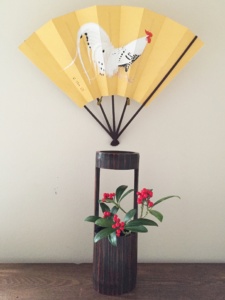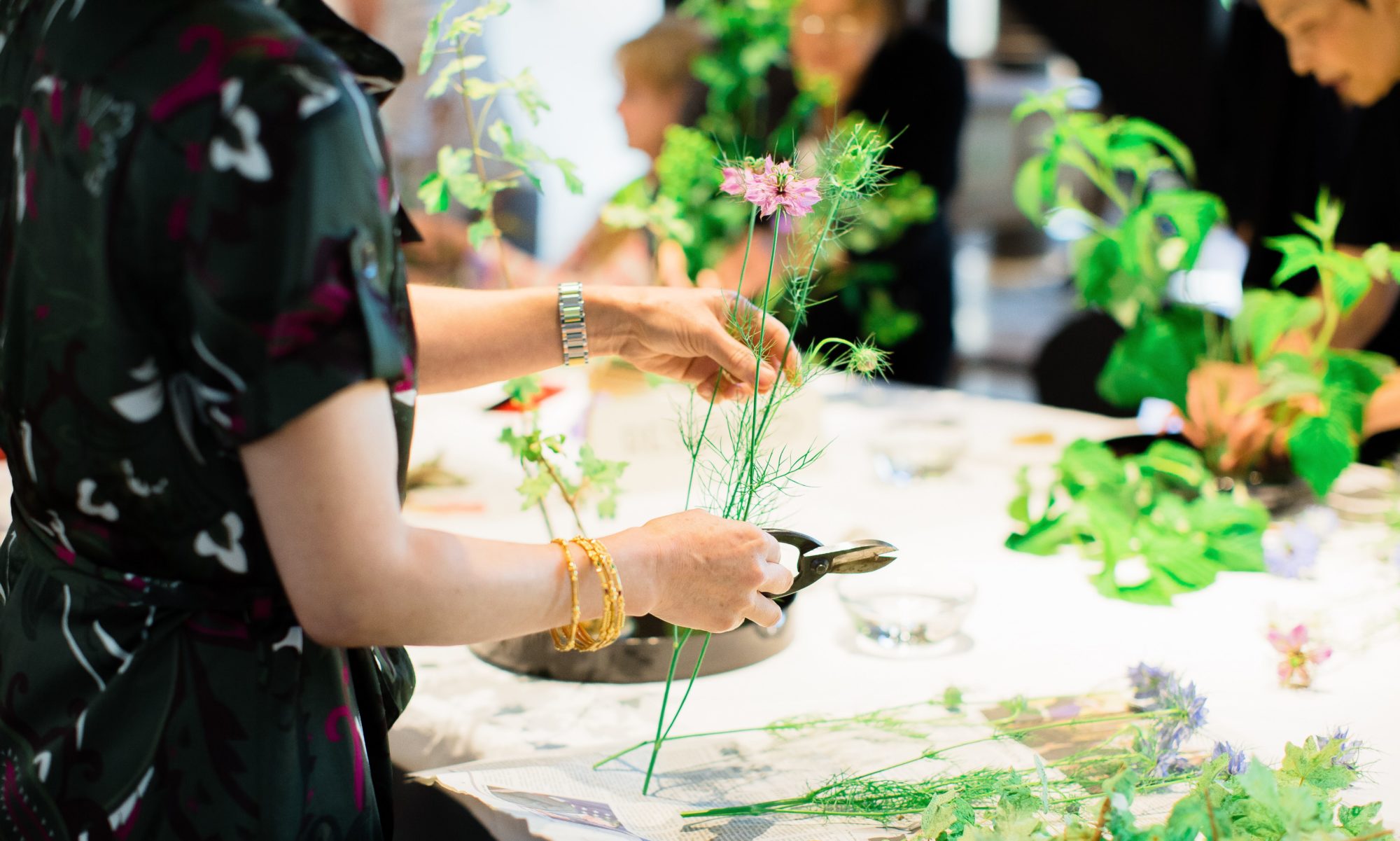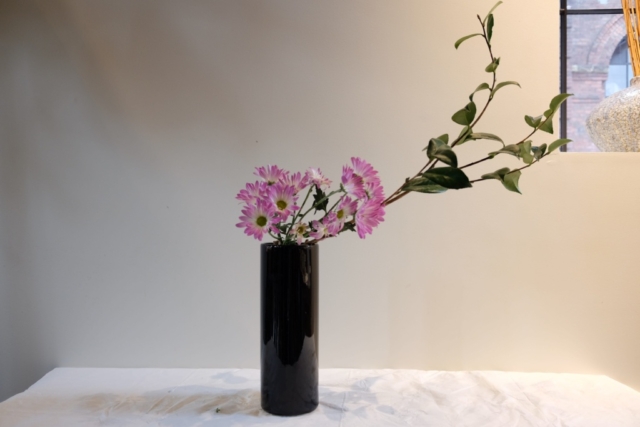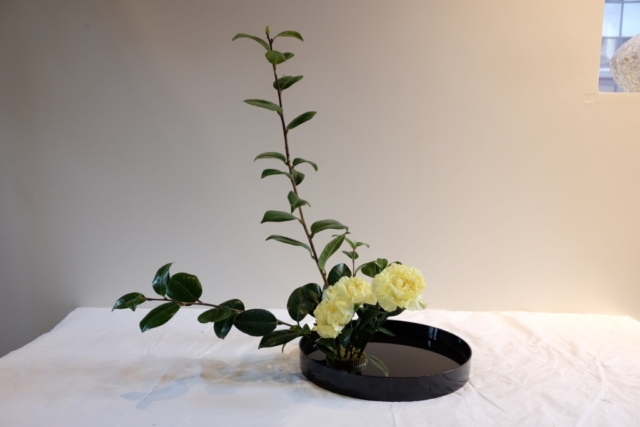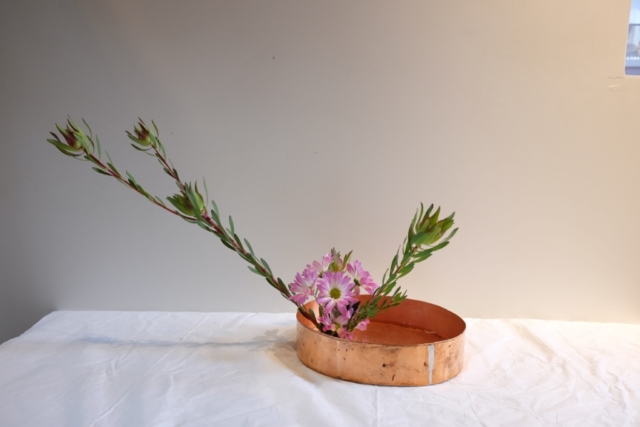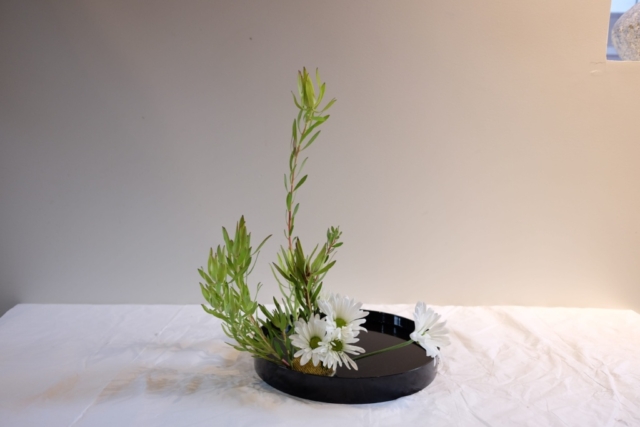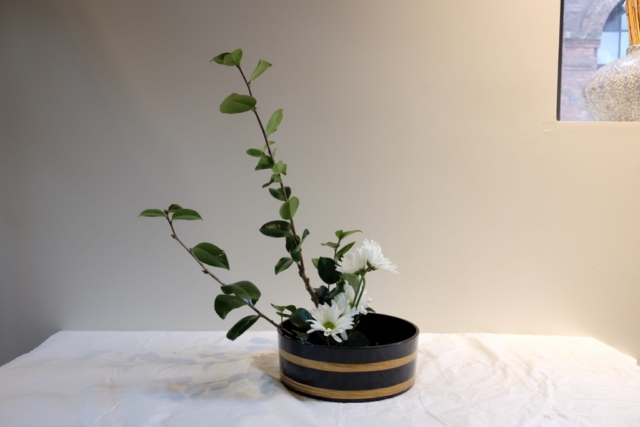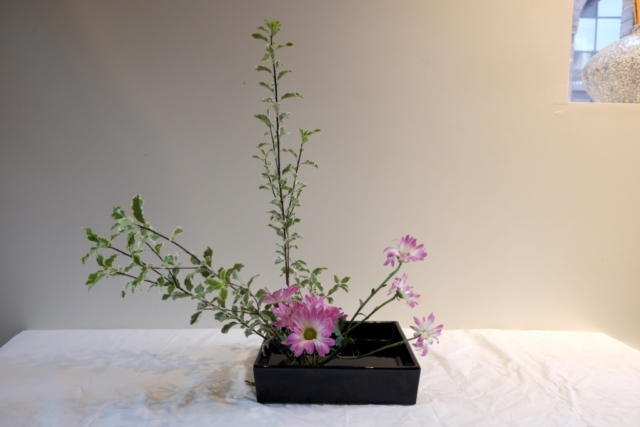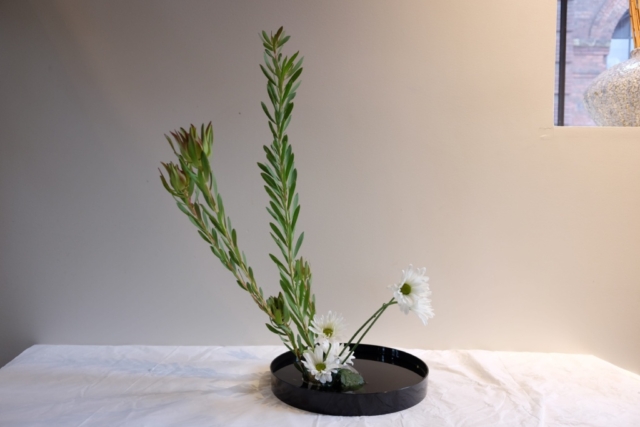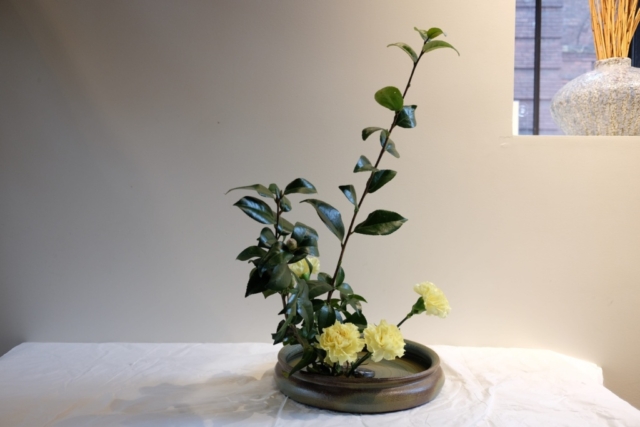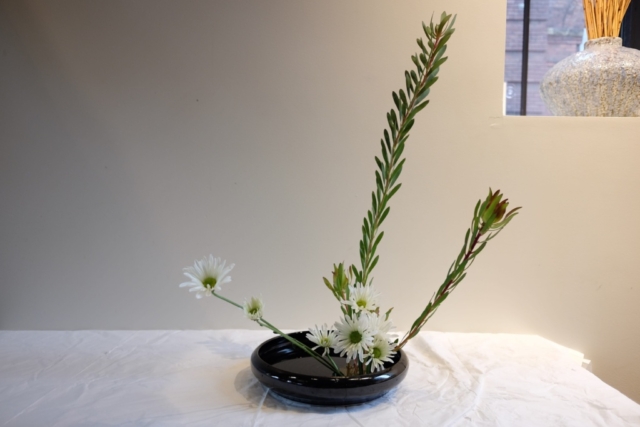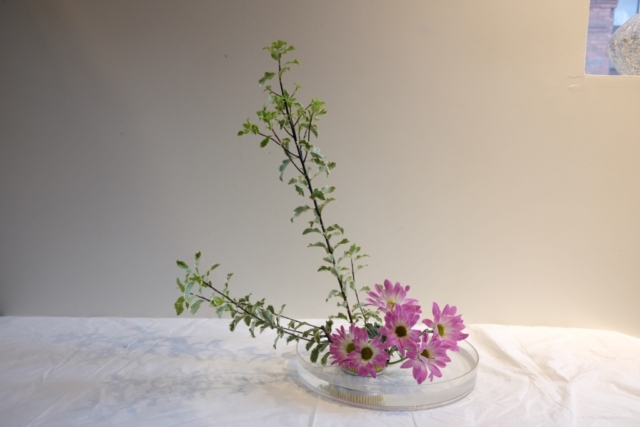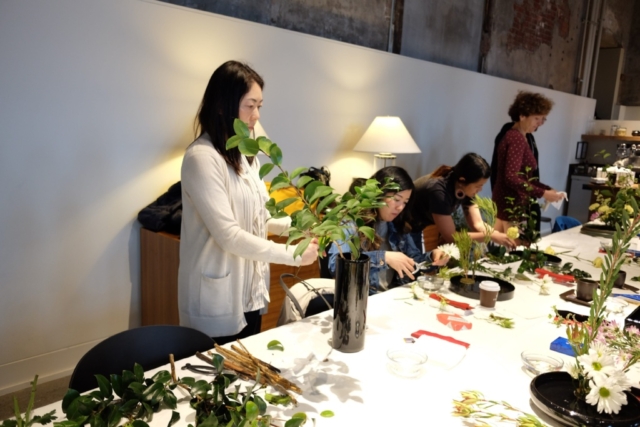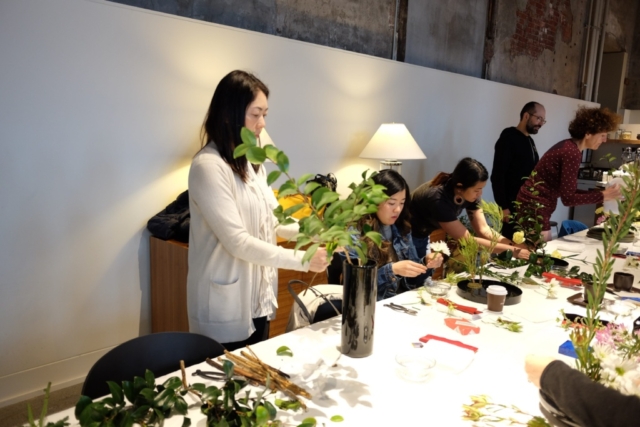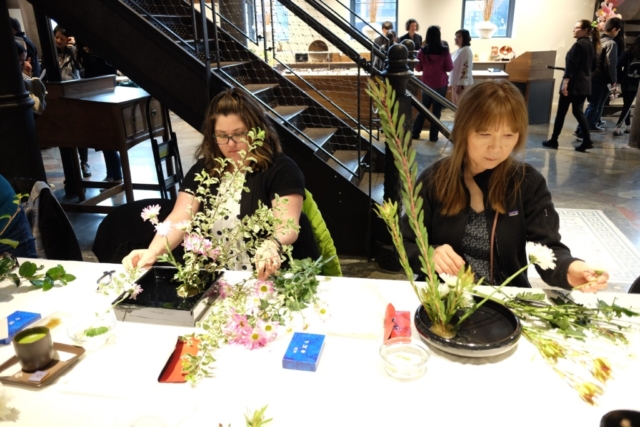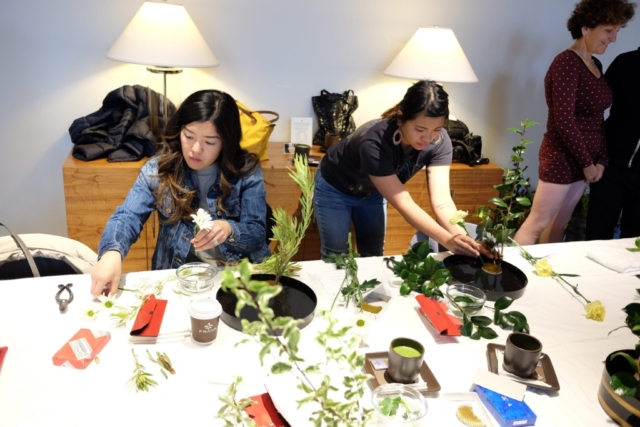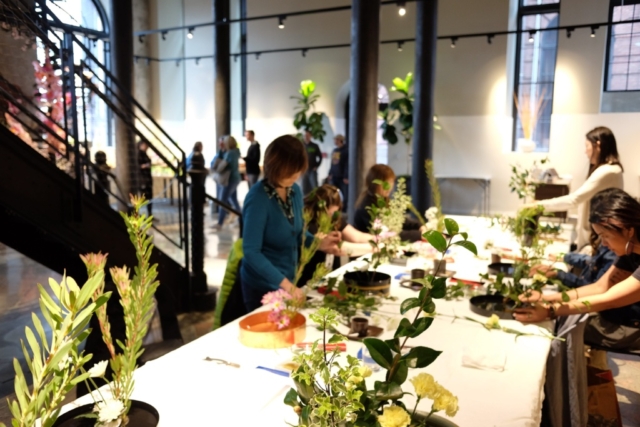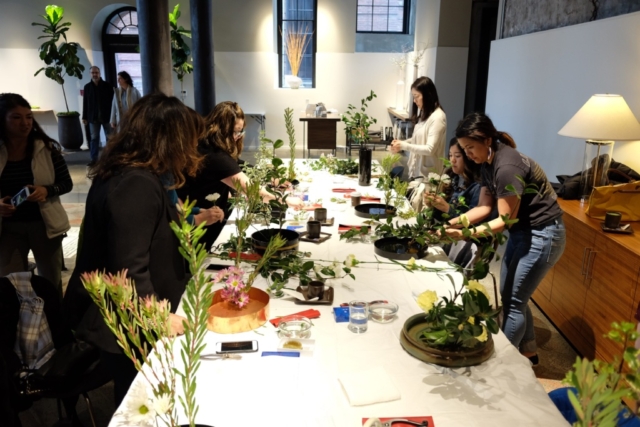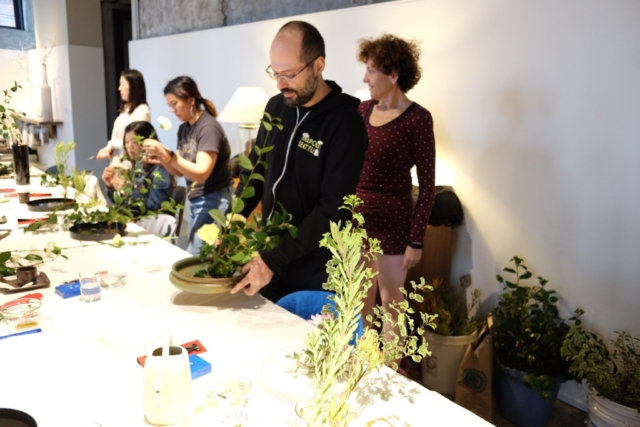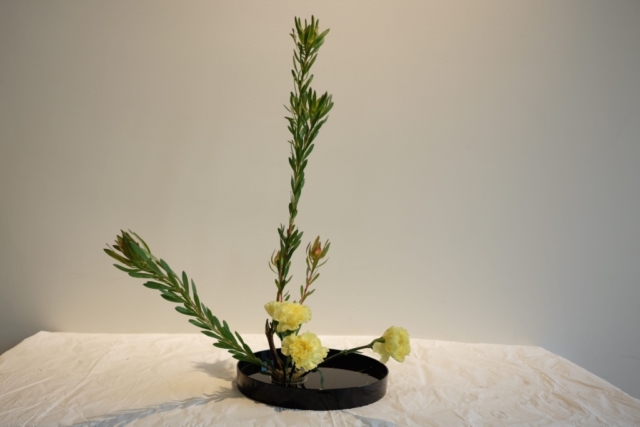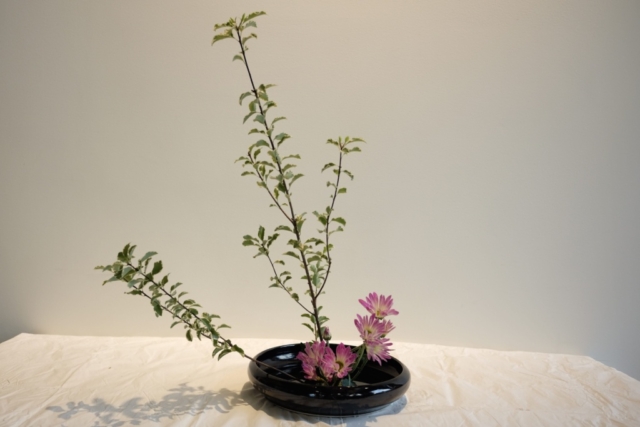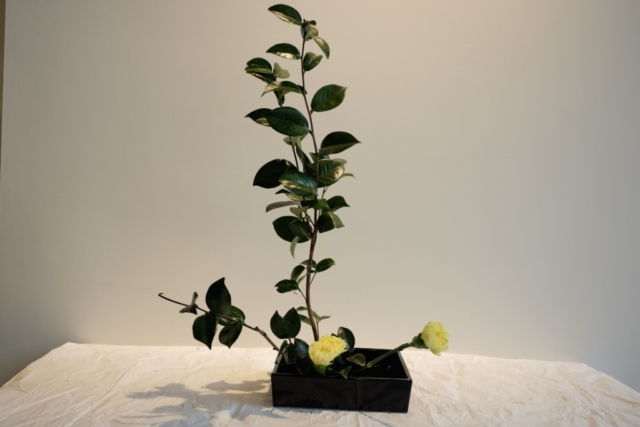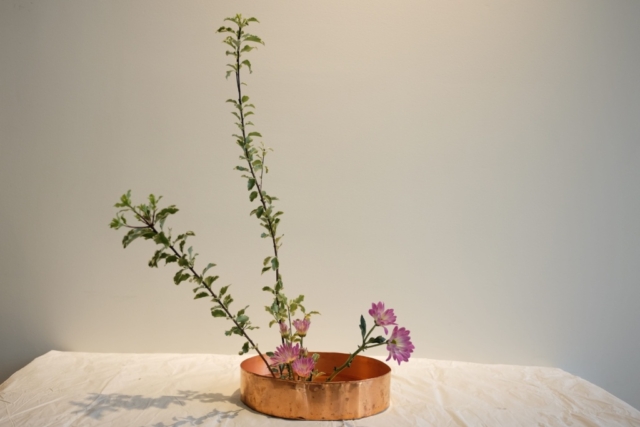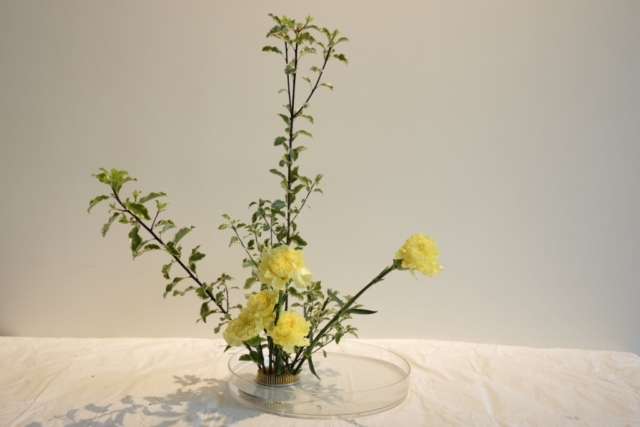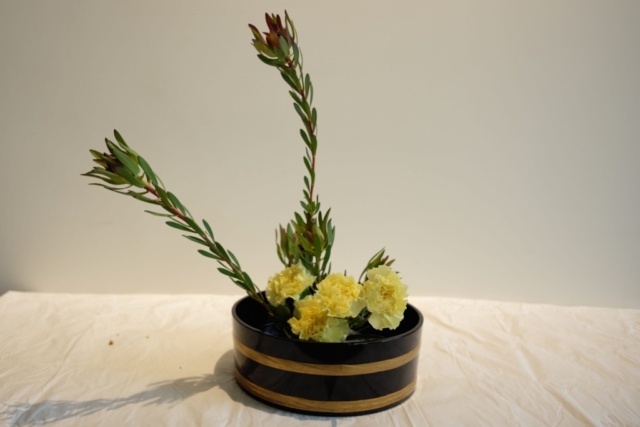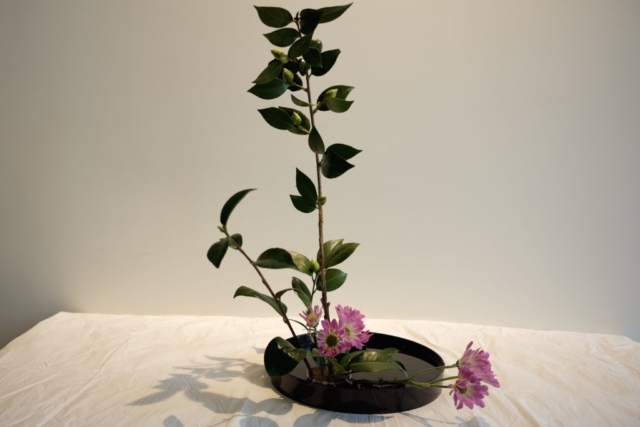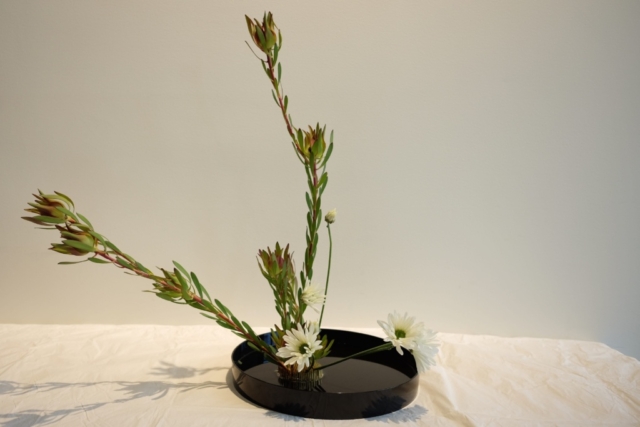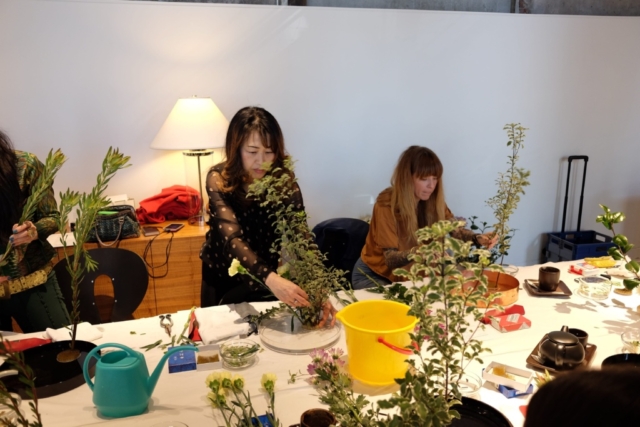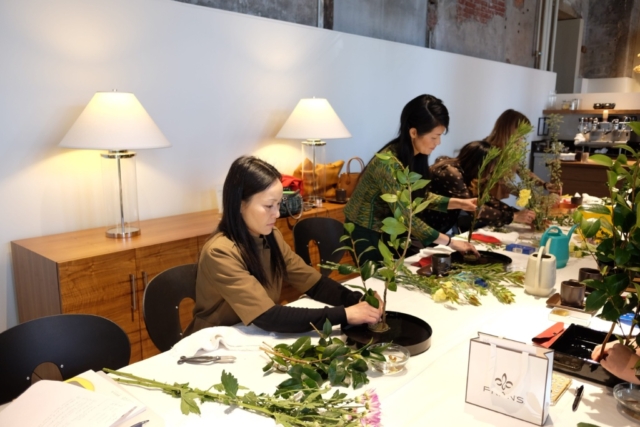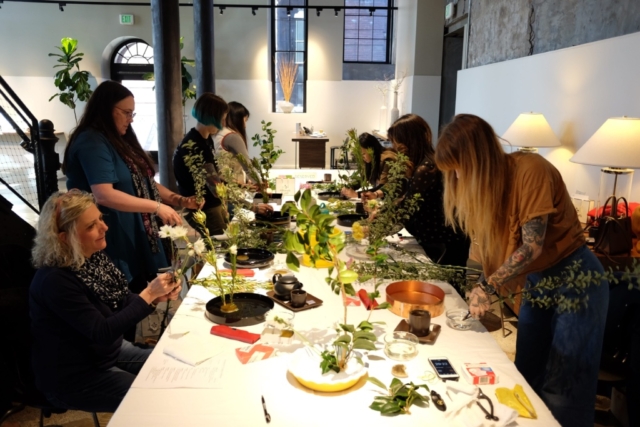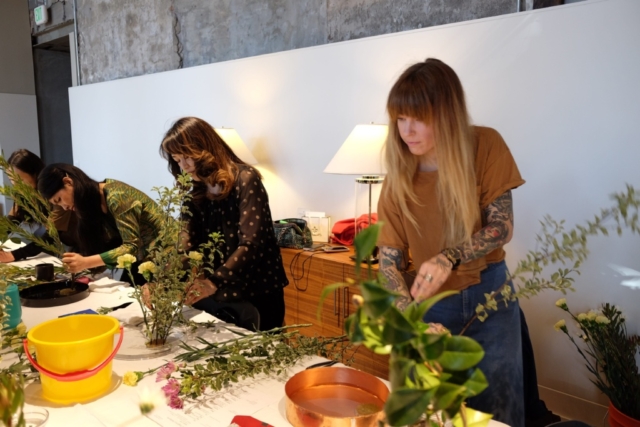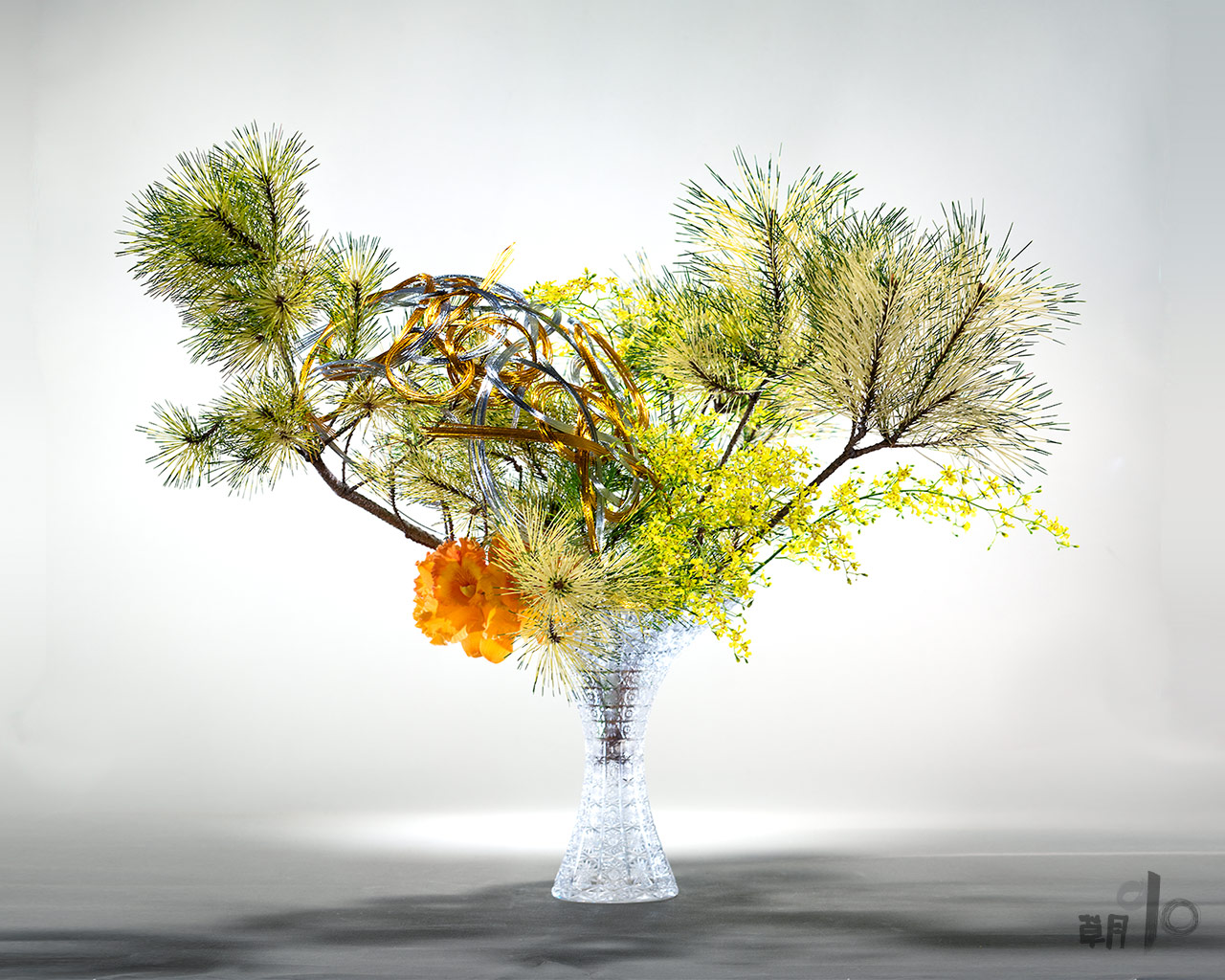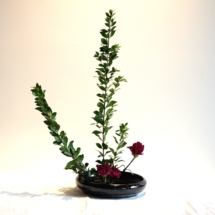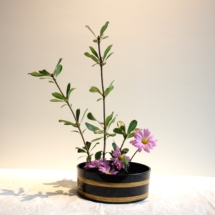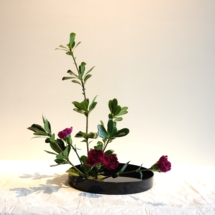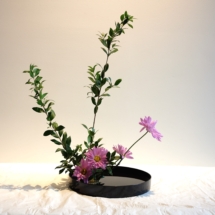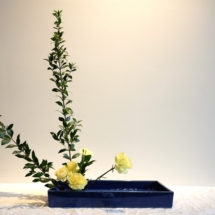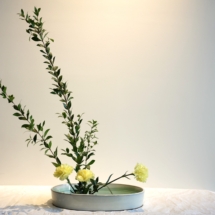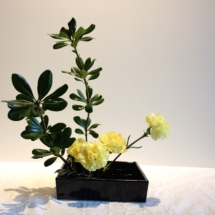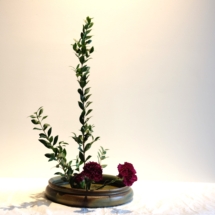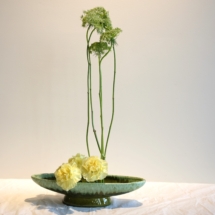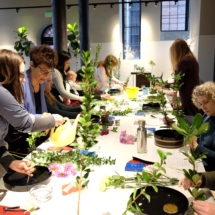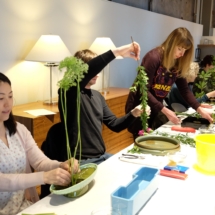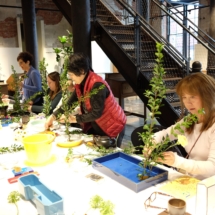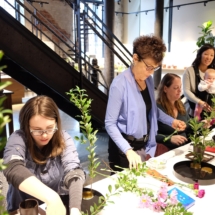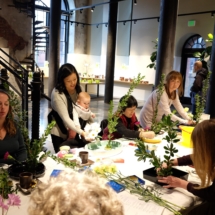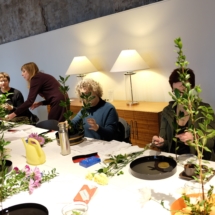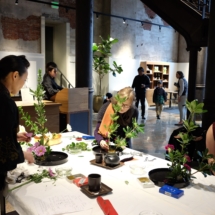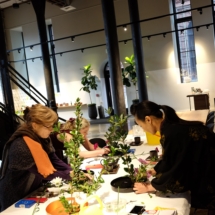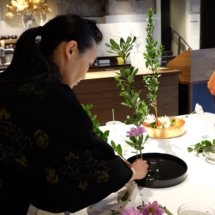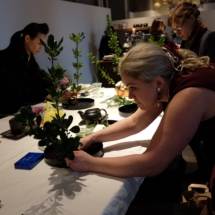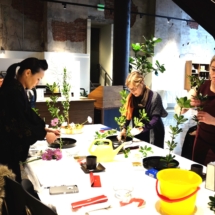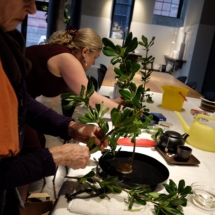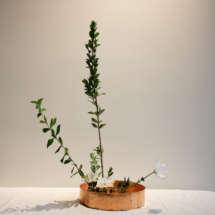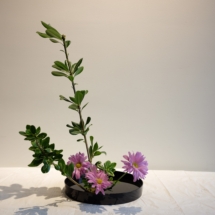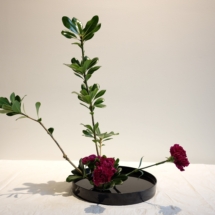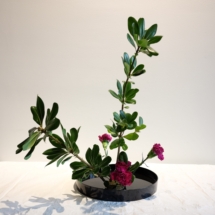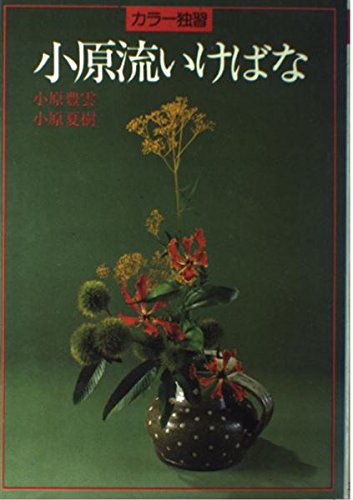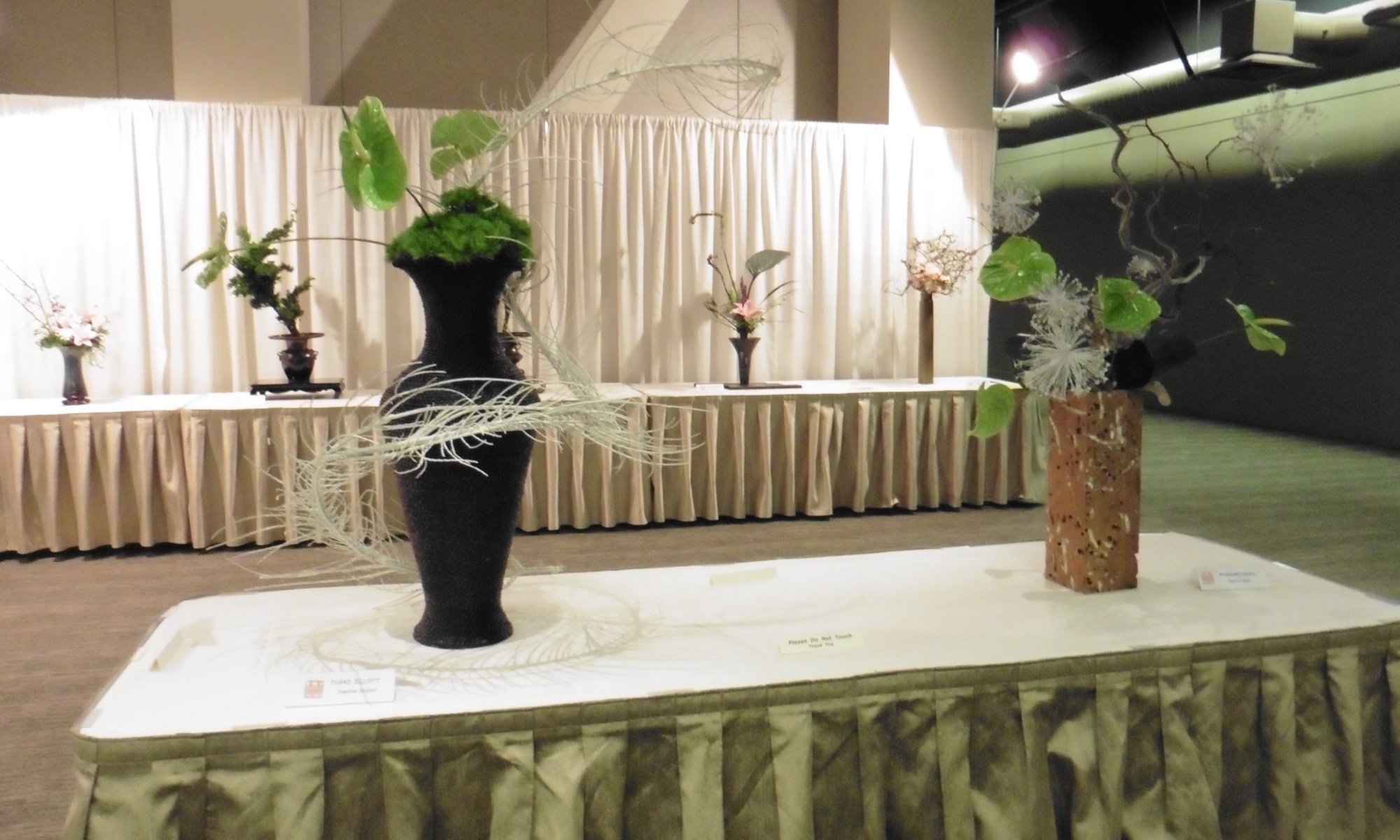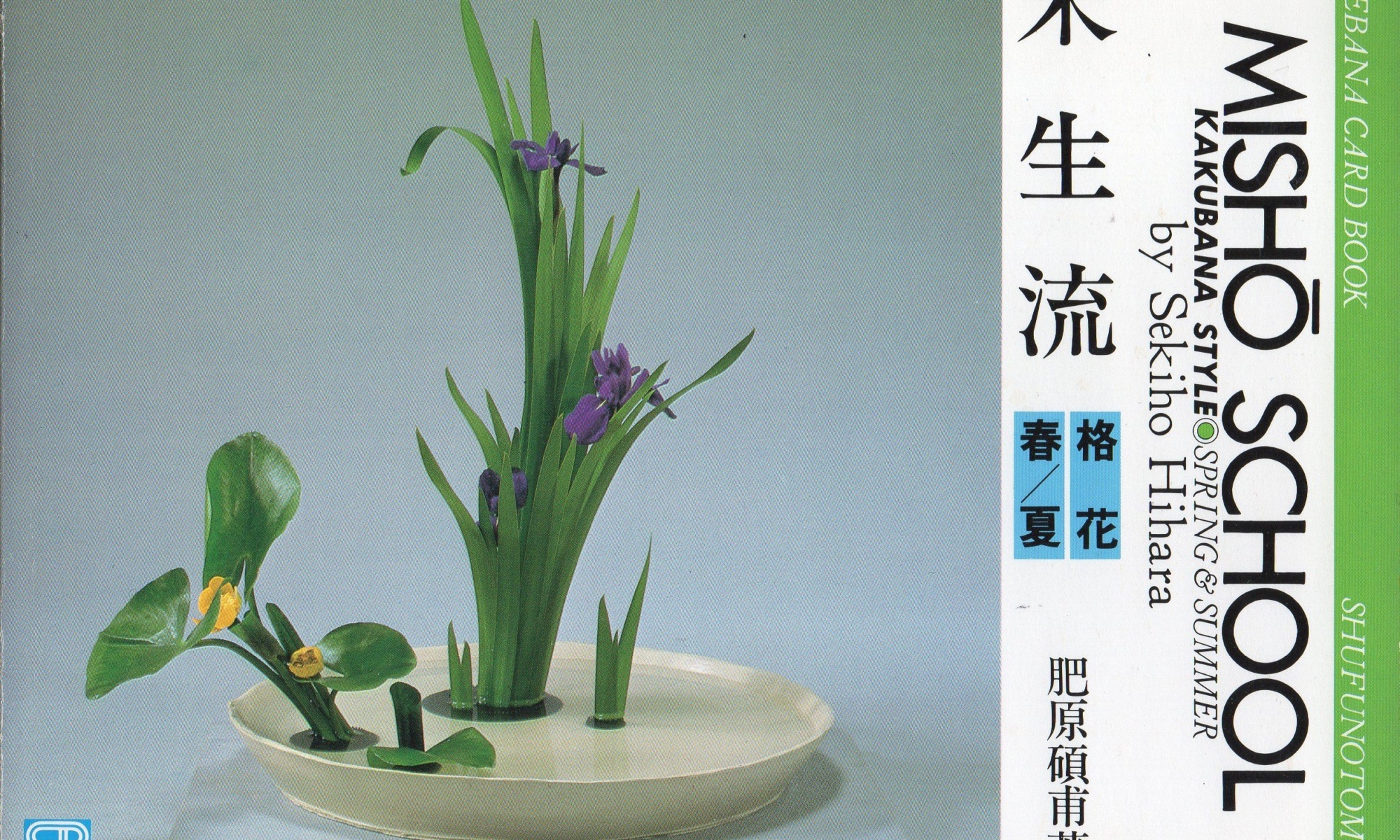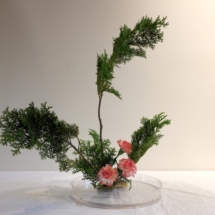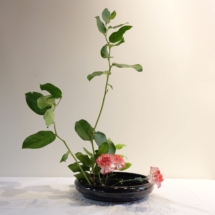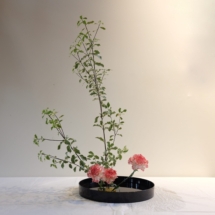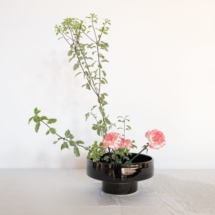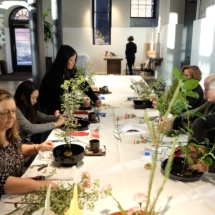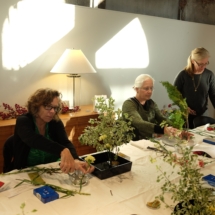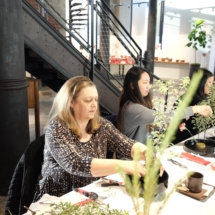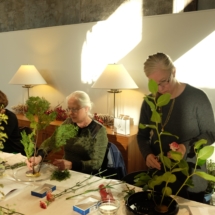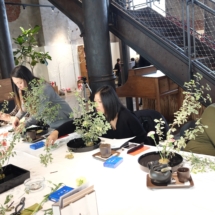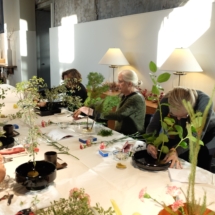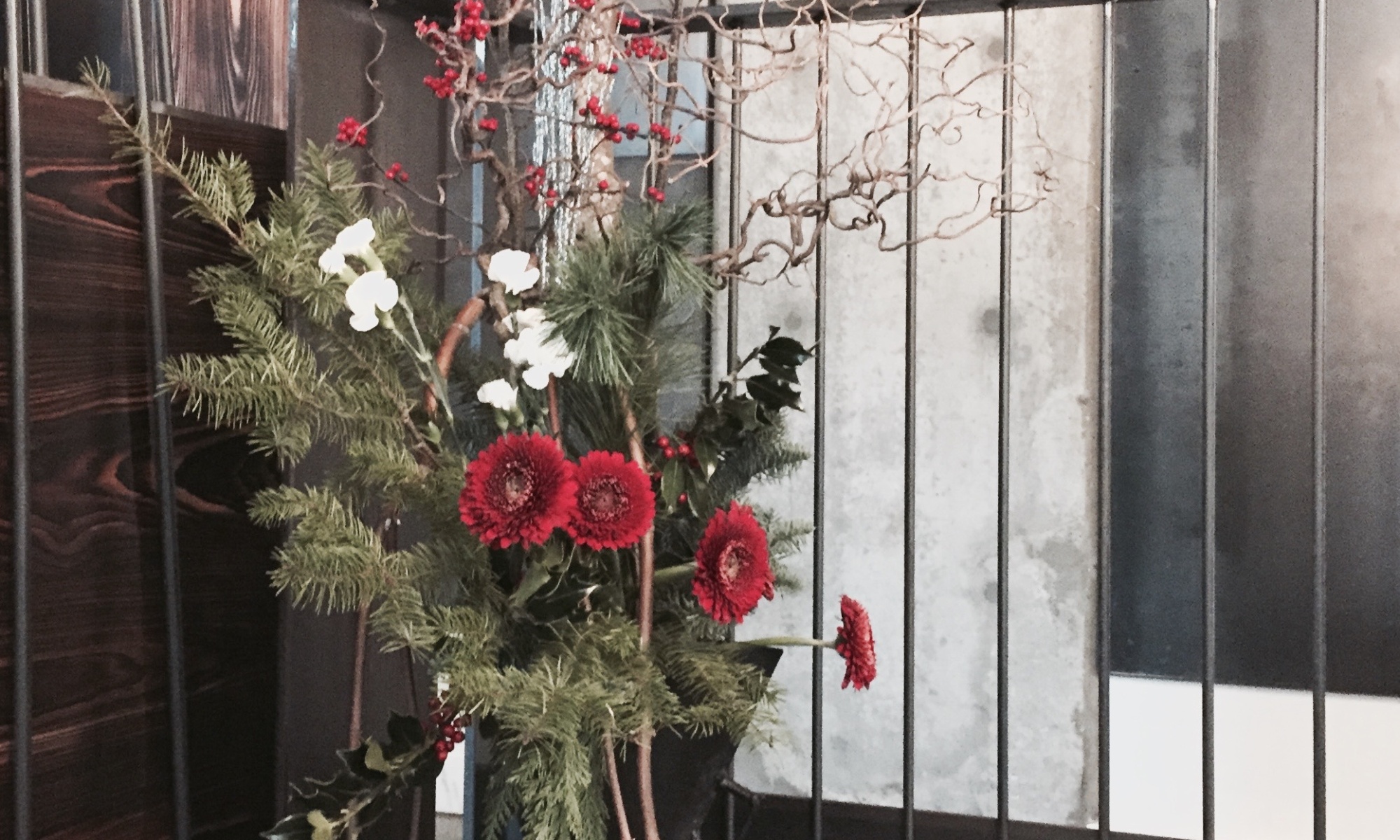Ten people joined the morning Ikebana class today. I hope everyone enjoyed it.
Class Photos: 3/15/2018
Sogetsu School: Anytime, anywhere, by anyone
Photo: Sogetsu.or.jp
Sogetsu School was founded in 1927 by Sofu Teshigahara. Compared with Ikenobo and other Ikebana schools, Sogetsu is among the newest. It emphasizes that ikebana can be enjoyed “anytime, anywhere, by anyone.”
Sogetsu School’s basic curriculum is made up with two steps. The first step is to study several styles called “kakei.” After experimenting and mastering these kakei, students move to experiment free styles with various themes. Themes include such as “movement,” “color,” and “pattern.”
Sogetsu textbooks are written both in Japanese and in English, and there are many branches or study groups worldwide. In North America alone there are 48 branches or study groups.
More than 20 years ago I came across Sogetsu. It was my first business trip back to Japan after I moved to Seattle. I was browsing at a bookstore, not looking for a book of any particular subject, let alone about Ikebana. It still remains a mystery to me why I picked up that book, but one sentence stood out in it. “Things aren’t the same once you have ikebana in your room.” The title of the book was The Sogetsu for Beginners.
Well, not only in my room. Things aren’t the same once I have ikebana in my life, really. How different? That’s something you have to experience yourself. I encourage you to at least try Ikebana once!
[mc4wp_form id=”1315″]
Class Photos: 2/17/2018
Eleven adults (plus a baby!) enjoyed the class today.
Thank you so much for coming! Here are the photos of today’s class.
Class Photos: 2/15/2018
Today’s class small but intimate. Thank you for joining us! Here are your beautiful arrangements.
Ohara School: Creator of Moribana Style
Unshin Ohara was first studying Ikenobo ikebana in Osaka. In 1895 he came up with a new style called Moribana, using a shallow and wider container and a kenzan. He also used many flowers that started to be imported to Japan after the country opened its doors to the western world.
With his new Moribana style and use of new western flowers, Unshin branched out from Ikenobo and established his own Ohara School in 1910.
At first many people criticized Unshin about his diversion from the traditional ikebana styles, but the public appreciated its versatility. Moribana matches Japan’s modern lifestyle, and now Ohara School has grown to having 148 chapters in Japan and 56 chapters overseas.
The first lesson that you would learn at Ohara School is called “tateru katachi” or rising form. I found a You Tube video describing this lesson, both in Japanese and in English.
Here is a video in Japanese by the headmaster Hiroki Ohara.
This video is in English.
Interested in taking Ohara ikebana lessons? Ohara School’s website lists up all the chapters outside Japan. I hope you will find one near you.
[mc4wp_form id=”1315″]
Where You Can Enjoy Ikebana in Seattle This Week
At the Washington State Convention Center!
“The Northwest Flower & Garden Show has been heralding the start of spring since 1989, as gardening enthusiasts from around the Northwest flock to this annual celebration held in the beautiful Washington State Convention Center for five magical days.”
According to Wikipedia, the show attracts 60,000 to 65,000 people each year and is the second largest flower and garden trade show only after the one in Philadelphia. This year the show will be held from February 7 (Wed) through 11 (Sun).
Ever since I can remember, Ikebana International Seattle Chapter #19i has been invited to participate in the show. This year the beautiful Ikebana arrangements will be displayed near the entrance to the seminar rooms. Many people who come to this show look forward to appreciating the Ikebana displays. Situated on the different floor from the market place booths, it’s quieter and will give you a nice break between the gardening-shopping spree.
The photo was taken at the show last year. Why don’t you take one with your own phone (or camera?) this year!
Misho School: Pursuing the Beauty of Geometry
Misho School (未生流) was founded in 1807 by Ippo Mishosai in Osaka. It is believed that the founder chose Osaka, not Edo (Tokyo’s old name) which was the political center, because he wanted to be free from authoritative powers.
Misho Shcool’s philosophy is “KyoJitsu Tobun”, meaning the nature itself is not complete but with human being’s involvement the fundamental beauty is achieved. Misho School also combines the concept of geometry and the Yin-Yan and the five elements (tree, fire, earth, metal, and water).
Misho School’s traditional flower style is called Kakubana. In the early 20th century Misho School added Shinbana style.
The current headmaster Keiho Hihara is the 10th generation.
Interested in learning Misho School ikebana? Currently they have classes in Vancouver BC, Spain, Germany, and Switzerland, but not in the US.
Class Photos: 12/14/2017
Today’s materials were pittosporum, Aussie pine, salal, cedar, and carnation.
Everybody created a beautiful arrangements. Thank you for joining the class today!
How to Make a Memorable Holiday Ikebana
It’s winter. The day time is short. Here in Seattle today, the sun rises at 7:50am and sets at 4:18pm. By now most deciduous trees have lost leaves and they look bare.
Focus on Color
When everything else looks dull in color such as gray and brown, the vivid green of trees such as cedar, fir and yew, looks all the more attractive.
No wonder why we look to evergreen to decorate inside and outside the house.
Green and Red: Complementary Colors
The complementary color of green is red. When placed next to each other, green and red give us the most striking contrast in the eye. And this high color contrast makes us feel full of life in the middle of winter.
Color is one of the important elements for Ikebana. Do you have any evergreen plant in your yard? Why not trimming a little and bringing home? Add some red color. Flowers, fruits, or even ribbons will do. Enjoy the high contrast of these two colors!
Color is one of the important elements for Ikebana. Do you have any evergreen plant in your yard? Why not trimming a little and bringing home? Add some red color. Flowers, fruits, or even ribbons will do. Enjoy the high contrast of these two colors!
